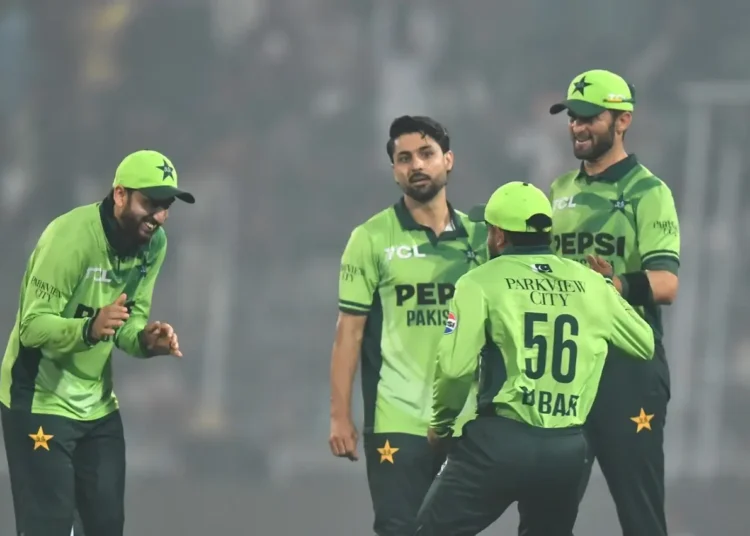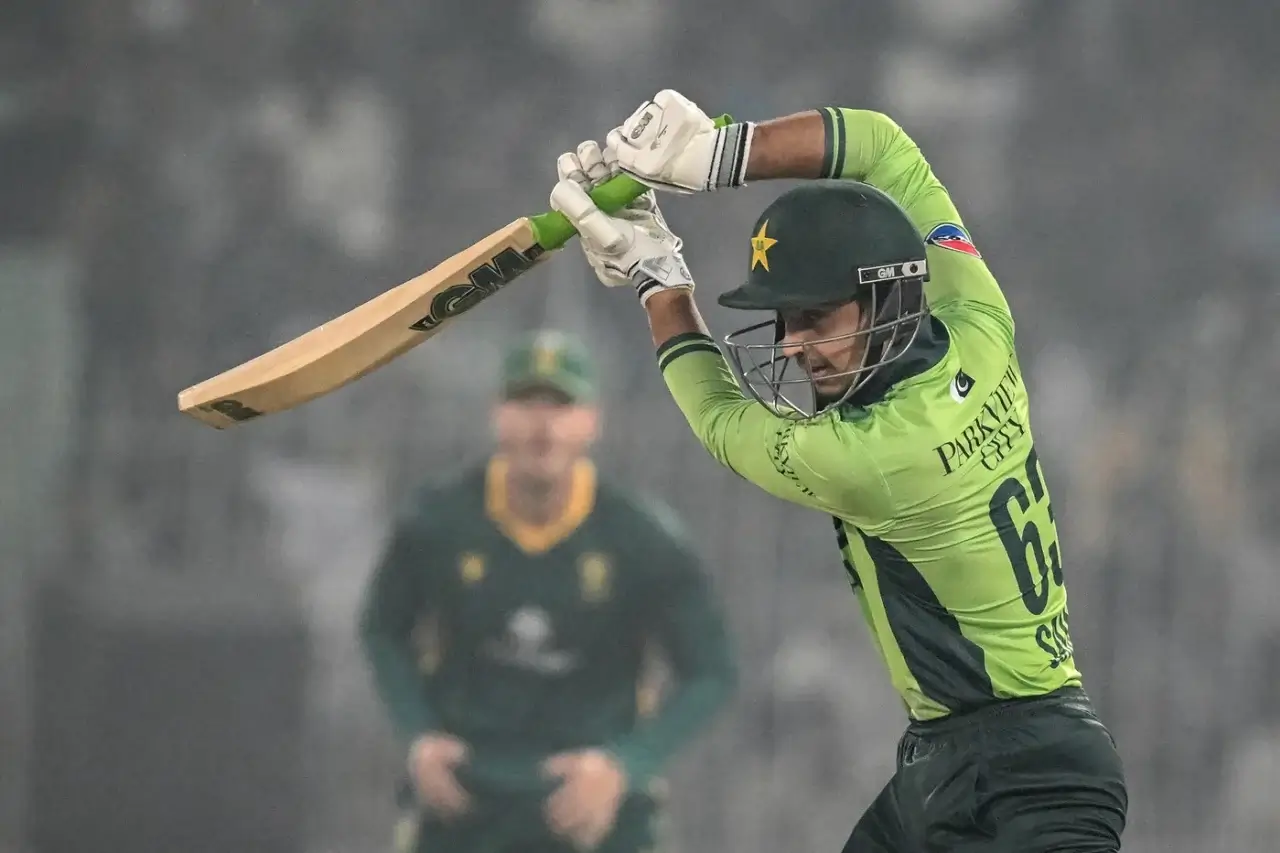Pakistan’s win over South Africa in Lahore marked a refreshing change in rhythm. Salman Agha and Babar Azam guided Pakistan through a tricky chase with calm control. Their partnership revived memories of their early days together, where rhythm and understanding came naturally. It was teamwork grounded in experience and quiet confidence.
Babar’s innings was not just about runs but reinvention. He reached his first T20I fifty in 18 months, his fortieth overall, by blending familiar timing with new aggression. He added a sweep shot rarely seen in his game, showing growth and awareness of modern demands. The crowd of over 32,000 roared as Pakistan completed the chase with comfort and composure.
Salman Agha later praised his long-time teammate’s work ethic and adaptability. He said Babar’s preparation remains unmatched and constant, regardless of recent form. For Agha, this discipline explains why Babar continues to evolve and stay relevant. It’s that combination of calm leadership and constant learning that defines this new Pakistan side.
The victory not only sealed the T20I series but also reshaped Pakistan’s narrative. The team’s form, often questioned after the Asia Cup, now appears more stable after Champions trophy loss. Agha rejected the “poor performance” tag, pointing out a 70% win ratio since the PSL ended. With ODIs ahead in Faisalabad, this revival feels perfectly timed.
Agha on Babar: Evolution, Preparation, and Influence
Salman Agha has known Babar Azam since their Under-16 days, a bond that now shapes Pakistan’s middle order. Their understanding was evident in the chase, especially when they remained calm under pressure. Agha said that batting with someone you know deeply simplifies decision-making, especially in tense moments. That trust became Pakistan’s foundation during the decider.
What impressed Agha most was Babar’s willingness to adapt. Known for classic drives and elegant timing, Babar added the sweep to his game — a rare move for him. It worked effectively against George Linde’s tight lines, breaking pressure and rotating strike. That subtle change made a huge difference in momentum and confidence.
Agha praised Babar’s unmatched preparation, saying he trains harder than anyone he’s seen. Whether in form or not, Babar’s focus stays fixed on process and improvement. His effort in practice translates directly into composure during games. That’s why Agha calls himself “a fan of Babar’s work ethic, not just his batting.”
This attitude reflects a broader cultural shift within the Pakistani camp. Players now admire Babar’s professional approach and replicate it in their own preparation. He’s not just a run-scorer anymore but a tone-setter. Agha believes if this “new Babar” continues, Pakistan will win many more matches.
Faisalabad’s Return: Pitches, Pressure, and Perspective
After nearly two decades, Faisalabad returns to the international stage. The Iqbal Stadium last hosted a major event in the mid-2000s, and fans have waited long for cricket’s return. The city’s passionate following and cricket culture make it a fitting venue for Pakistan’s next challenge. These ODIs will test players’ adaptability on fresh, flat, and at times high-scoring pitches.
Faisalabad’s surfaces, used recently in the Champions Cup 2024, produced totals above 300 in most games. Bowlers had to rely on discipline and smart variations rather than raw pace. Pakistan prepared for exactly that kind of environment, especially with an eye on the World Cup 2027 in Sri Lanka. The focus now is on managing 140–150 type matches instead of chasing massive scores.
Agha explained that Pakistan’s team management planned these conditions to prepare ahead. He pointed out that winning is not only about results but readiness. These games will provide context for how Pakistan handles different surfaces and scenarios. It’s more of a strategic rehearsal than a simple bilateral contest.
Fans, too, see it as more than just another series. For Faisalabad, it’s a moment of renewal. For players like Babar, Shaheen, and Fakhar, it’s a stage to showcase adaptability. The energy around the city reflects how much this return means for Pakistan cricket.
Pakistan’s Bowling Trio and the Challenge Ahead
When Shaheen Afridi, Haris Rauf, and Naseem Shah bowl together, Pakistan’s attack becomes fearsome. They’ve taken 31 wickets in five matches when used as a trio. However, injuries and rotation have often prevented them from playing consistently together. This ODI series in Faisalabad offers a rare chance to see them operating in unison.
The three pacers combine pace, movement, and aggression perfectly. Shaheen swings the new ball early, Haris provides mid-overs hostility, and Naseem brings accuracy and bounce. Together, they can dismantle top orders within the first ten overs. But the key will be how they adapt to batting-friendly surfaces and workload management.
Pakistan’s coaching staff has made workload rotation a top priority. With World Cup 2027 in mind, overuse of fast bowlers is a genuine concern. Managing spells, limiting overs, and using smart field placements will be critical. Agha emphasized teamwork among bowlers, saying “keeping teams under par” is the first rule.
If Pakistan executes this bowling plan efficiently, ODIs could feel less like transition games and more like progression stages. The trio’s rhythm and chemistry will shape how Pakistan approaches future white-ball tournaments. Consistency here could redefine Pakistan’s fast-bowling legacy yet again.
Babar’s New Shot and Why It Matters
Babar’s introduction of the sweep shot might seem small, but it is strategically significant. For years, bowlers targeted his pads, knowing he rarely used the sweep. By playing it confidently in Lahore, he turned a weakness into a scoring option. It forced South Africa’s bowlers to adjust line and pace quickly.
Technically, it demonstrates how Babar is refining his range against spin bowlers. His body position and bat swing now look more controlled and assured. Agha pointed out that this “new Babar” isn’t afraid to experiment mid-series. That evolution gives him an edge as bowlers lose predictability.
For Pakistan, this development is vital. When Babar expands his scoring zones, the batting lineup gains flexibility. Opponents can no longer limit him with spin traps or tight fields. It’s an evolution in mindset as much as in mechanics.
Series Importance: Beyond Results and Rankings
To some, these matches might seem like just another bilateral series. But for Pakistan, the significance runs deeper. After facing criticism following the Asia Cup, Agha’s side now plays with renewed clarity. He insists that performances have been strong, despite the narrative of inconsistency.
Pakistan’s 70% win ratio since the PSL suggests stability and steady growth. The team won a tri-nation series and reached the Asia Cup final — results that indicate direction rather than decline. Agha said the goal now is to keep improving rhythm, especially under low-scoring, pressure conditions.
This series is also designed to build momentum for next year’s tournaments. Playing on home soil provides valuable insights into form, combinations, and mental readiness. The young players, too, will learn how to handle local expectations in high-profile venues.
For South Africa, it’s an opportunity to test bench strength ahead of future tours. For Pakistan, though, it’s about proving consistency and maintaining confidence. Every ODI here becomes another step in a longer preparation plan.
Conclusion
Babar Azam’s return to form feels like a statement, not a coincidence. His adaptability, work ethic, and willingness to evolve define the maturity of Pakistan’s modern era. Salman Agha’s words underline the respect Babar commands within the team. His leadership sets a tone of calm growth, not flashy reaction.
Pakistan’s dressing room appears united and focused on long-term goals. The mood after Lahore’s win feels lighter but more purposeful. The upcoming ODIs in Faisalabad will test that discipline against a solid South African side. For fans, it’s a chance to watch Pakistan refine skills rather than chase validation.
If Babar Azam, Shaheen Afridi, and Naseem Shah continue leading with consistency, Pakistan’s rebuild looks promising. Their adaptability in various formats suggests a team learning from its past. This phase might not be loud, but it’s meaningful. In every sense, this Pakistan team is rediscovering its rhythm — and its belief.







